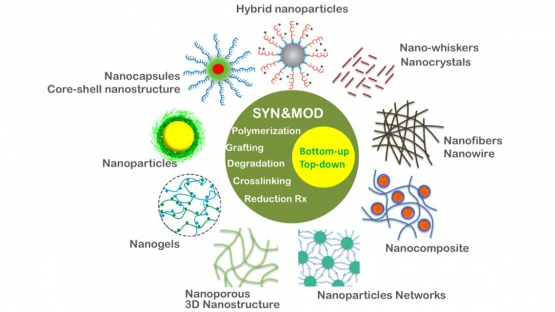Starting in 2018, the IAEA is launching a new 4-year Coordinated Research Project (CRP) that will enhance the capability of Member States in the application of nanotechnology in several areas including environmental protection and remediation, electronics and energy, and advanced functional materials.
Radiation processing has long been recognized as an energy efficient technology with strong application potential in several industrial areas. Today, the specific advantages it presents are being utilised by nanomaterials and nanoscale engineering for applications in such diverse sectors as medicine and healthcare, electronics, energy, environment, advanced materials and food and agriculture. It is important that up-to-date information on nanoscience and nanotechnology be shared among academic and industrial research centres with complementary expertise. Sharing this information will support Member States in developing methodologies and technologies for the use of radiation in the synthesis, modification, fabrication, and characterisation of nanomaterials.
In this CRP, the synthesis and fabrication of nano-particles and nano-structures will be done using radiation-induced reactions. These reactions will be initiated by various ionizing radiations, including gamma ray, electron beam, X-ray and ion beam. Radiation processing is a unique tool for synthesizing nanomaterials of various types and offers a promising alternative to conventional synthetic methods for several reasons. In particular, it is more environmentally friendly because it consumes less energy, creates less waste and uses less chemicals.
As part of a previous CRP, ‘Nanoscale Radiation Engineering of Advanced Materials for Potential Biomedical Applications’ (2008-2012), nanomaterials prepared using high energy radiation were characterised and evaluated for applications as diverse as food packaging, biomedical devices, theranostics, coatings, sensors for security systems, water purification units, high performance composite materials. There is now a near-future need for supporting new collaborative action aimed at the development of novel generic nanofabrication methodologies (synthesis of anisotropic nanoparticles, advanced graft polymerization, swift heavy ion structuration), and new specific value-added products by using the potential of the radiation processing toolbox as well as the recent advances of nanoscience.



